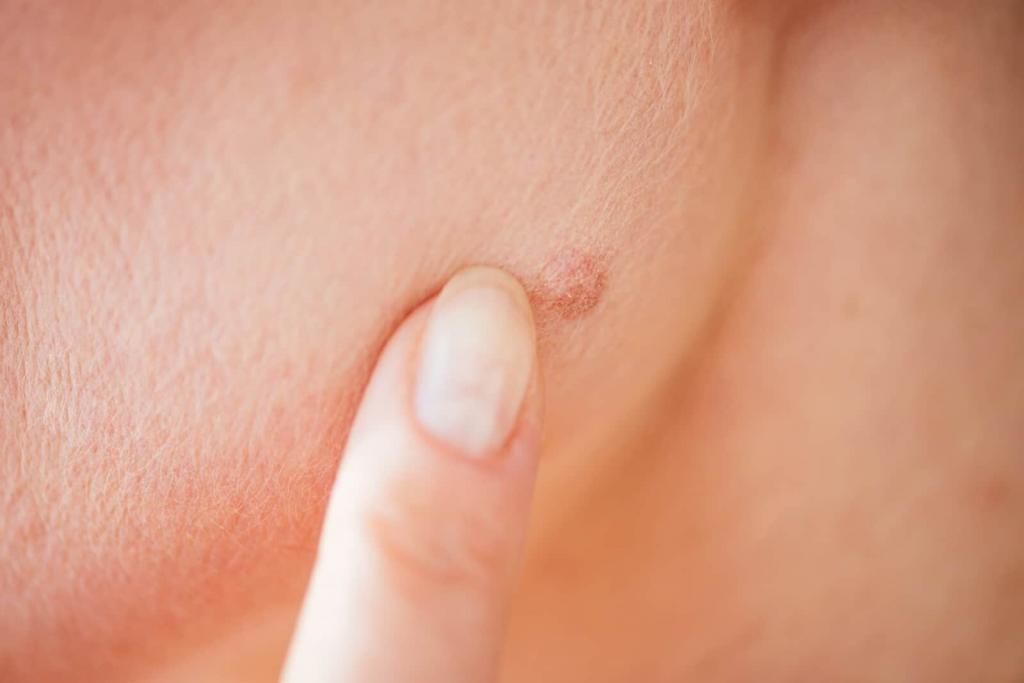- 23 September 2021
- Posted by: Kiss. Dr. Necat Kaplan
- Categories: Diabetes, General

Skin Diseases in Diabetes
With the increase in blood sugar level, various skin diseases may occur due to diabetes. Skin diseases are more common in cases where obesity and diabetes occur together. There is a possibility that these diseases will regress if blood sugar levels are paid attention to. It is seen that insulin and similar drugs used trigger skin diseases.
Skin diseases in diabetes It can be diagnosed at an early stage by monitoring the sugar level in the blood. People with diabetes should perform necessary skin checks on a daily basis. It is recommended that you consult your doctor if any changes occur on the skin.
How Can Skin Diseases Be Prevented?
In order to prevent skin disorders, necessary examinations must be performed regularly. If the blood sugar level is kept balanced, a positive improvement is observed in the symptoms caused by skin diseases. Controlling diabetes reduces the risk of skin diseases. High blood lipids and increased uric acid levels can cause skin diseases.
Skin Changes in Diabetes Treatment
diabetes treatment In this stage, allergic factors may occur in order to see improvements in sugar metabolism. These changes are generally known to be harmless. Local rashes occur due to drug treatment. Blisters and hives may occur on the skin. These situations are rarely encountered among patients.
While some diabetes medications cause skin diseases, some medications have the possibility of treating skin diseases. Skin disorders on the body are not common. If it is detected in people, recovery is achieved in a short time. Insulin supplementation is carried out by injection. Thus, oil changes are observed. These changes are called lipodystrophies. Various damages can be prevented by changing the areas where patients inject insulin using this method.
Another method used compared to insulin pens is insulin pumps. In insulin pump treatment, the catheter is injected under the skin. Compared to insulin pens, it may cause some damage to the skin. If not used cleanly, elements that may cause various skin infections may occur.

Skin Infections in Diabetes
in diabetes skin diseases In addition, various skin infections may occur. This situation is quite common. It is more likely to occur in people whose treatment process is not planned properly. Therefore, the steps to be followed within the scope of treatment must be decided in line with the needs of the patient. Various fungi also appear within the scope of skin problems caused by diabetes. Some types of infections seen are as follows.
Serpentine: It is a type of inflammation that spreads rapidly on the skin tissue. Due to its formal characteristics, it is an area with sharp edges and redness. In addition to this infection, patients report symptoms such as swelling, fever and chills. It is usually seen in the skin tissue on the face and legs. Due to this disease, blisters that reach severe sizes may form on the skin.
Erythrasma: It usually appears in areas with high sweating rate. It can also appear on sharp skin points. There are certain structural features of infection formation. It has been observed to have a scaly texture in red or brown tones. Itching is rarely encountered among the symptoms experienced by patients. It needs to be checked early. If it spreads, it can cause advanced skin infections.
Various fungal infections in diabetes;
Tinea: This type of fungus consists of skin, hair and nail infections. In diabetic patients, it usually appears between the toes. White areas may occur in these areas. It is possible that deformities may appear in the nails.
Candida: This type of fungus is caused by yeast fungi. It is usually seen in the mouth and skin folds. Additionally, it may also be encountered in the hair follicles and genital area in some patients. It is quite normal for people to experience itching and burning during the day.
Various skin changes can be seen in diabetic patients. Diabetic foot syndrome is one of them. It generally causes skin damage on the feet. In case of circulatory disorders, it is possible to cause foot ulcers. It is considered an emergency by specialist physicians. Advanced skin disorders may be encountered on the feet. It is very important to start treatment as soon as possible after diagnosis. If this situation is not prevented, it is inevitable that the wounds will become infected.
Treating Skin Diseases
Skin diseases in diabetes Regular medical check-ups are very effective in its treatment. Medication treatment can be started for patients at the point of healing of their skin problems. During medication use, medication changes can be made by a specialist physician. Skin dryness appears to be common in diabetic diseases. This dryness can be prevented with skin products and regular cleansing. It is extremely important to be examined at regular intervals and follow up the findings in the treatment of skin diseases.
